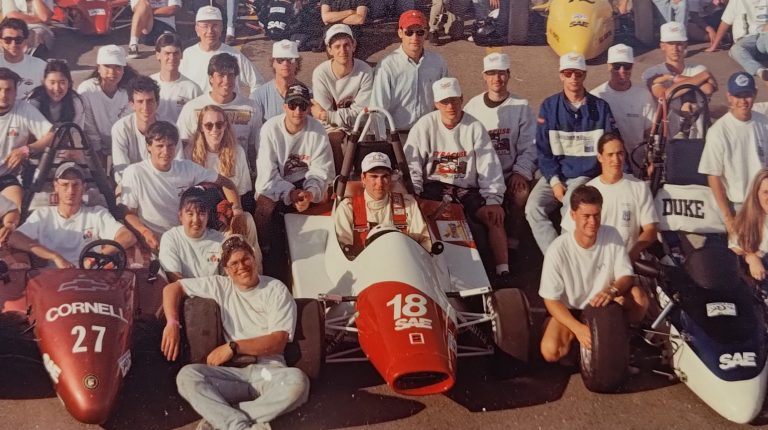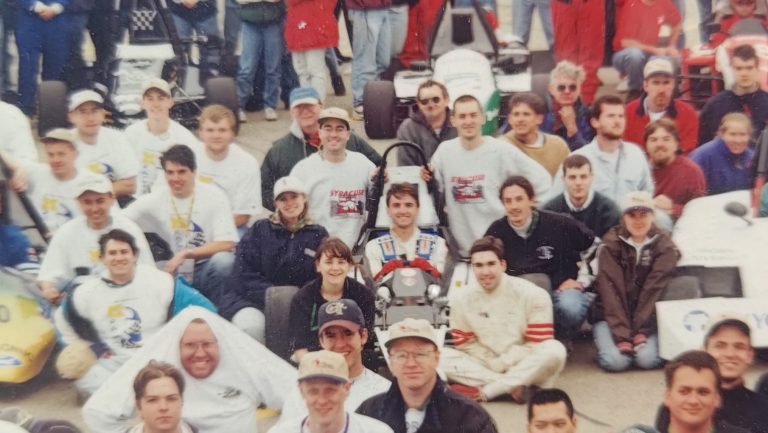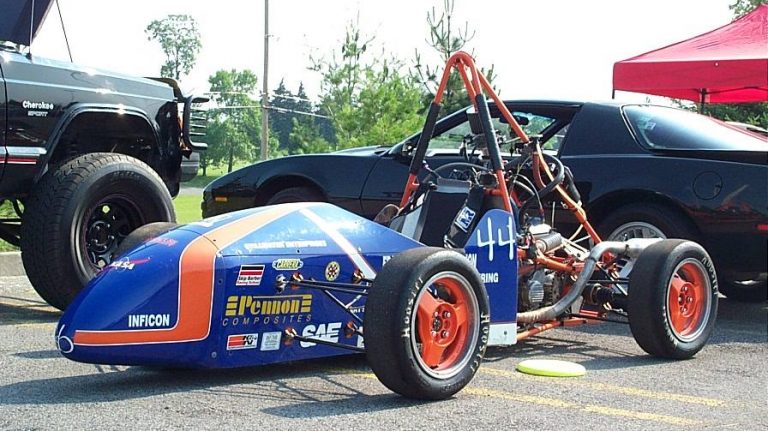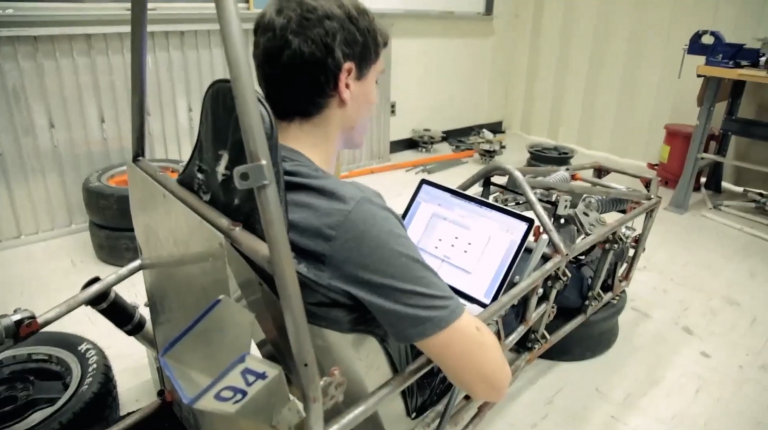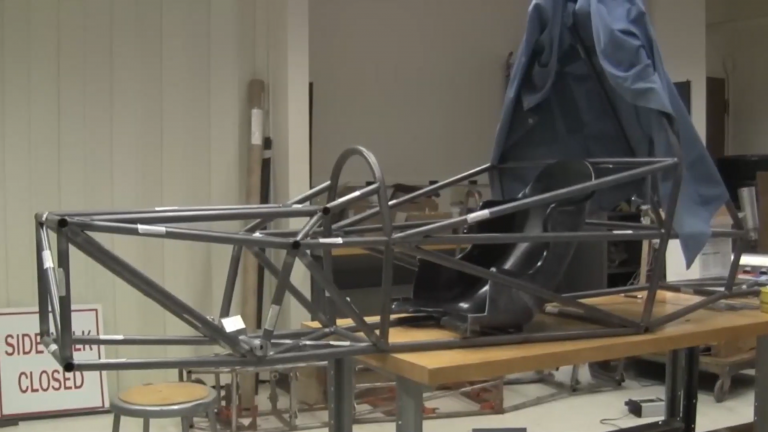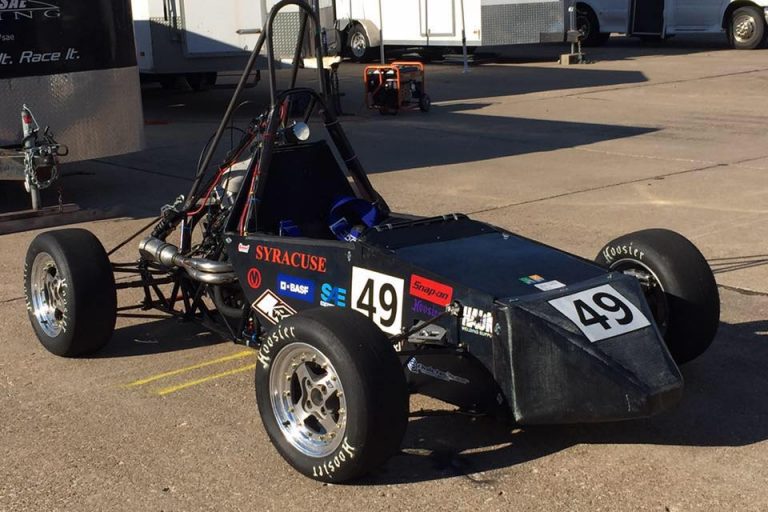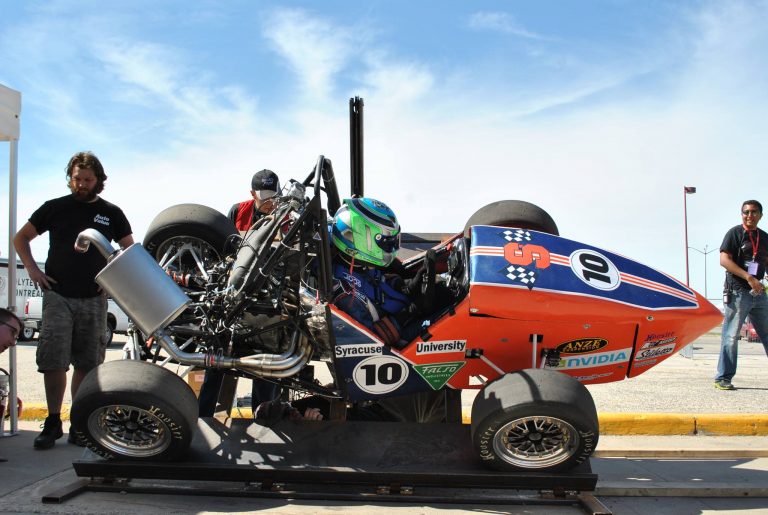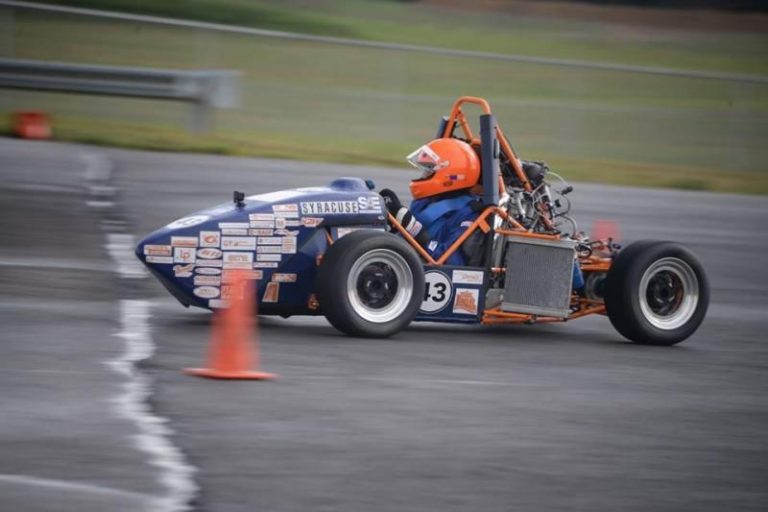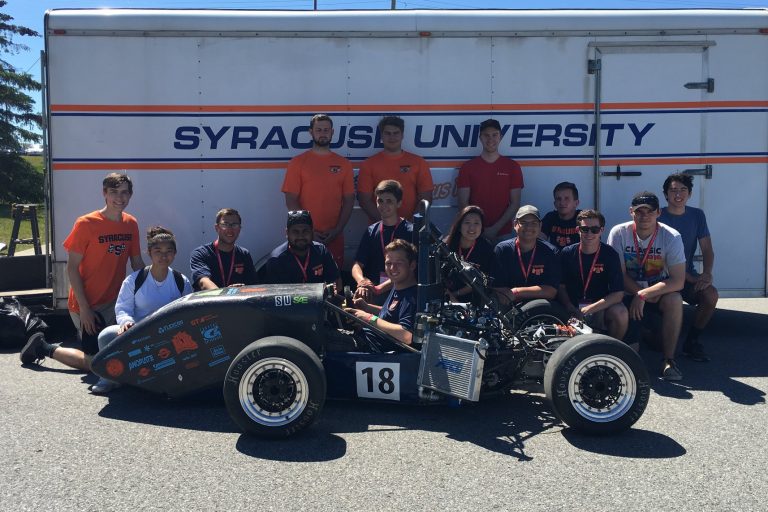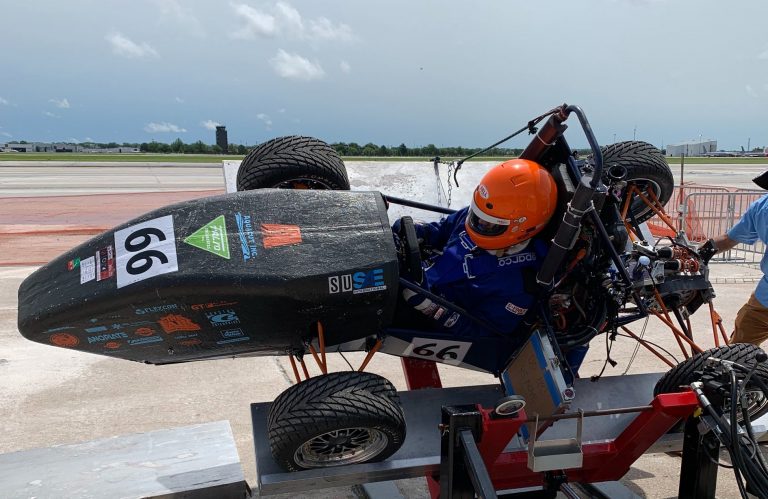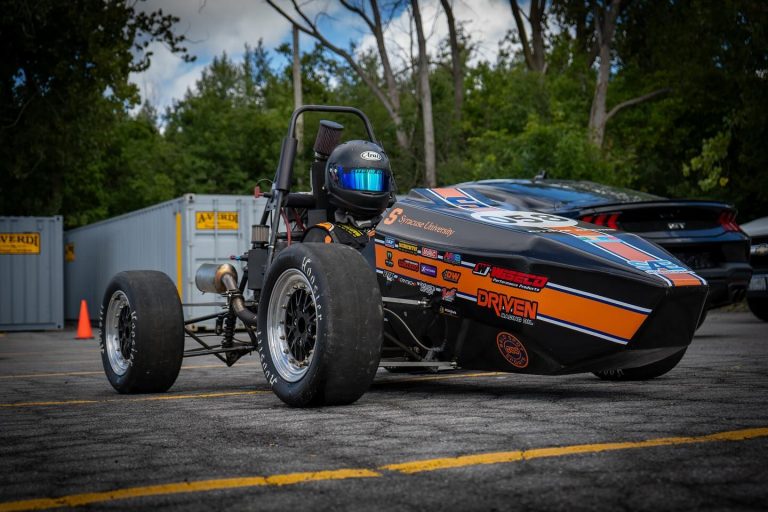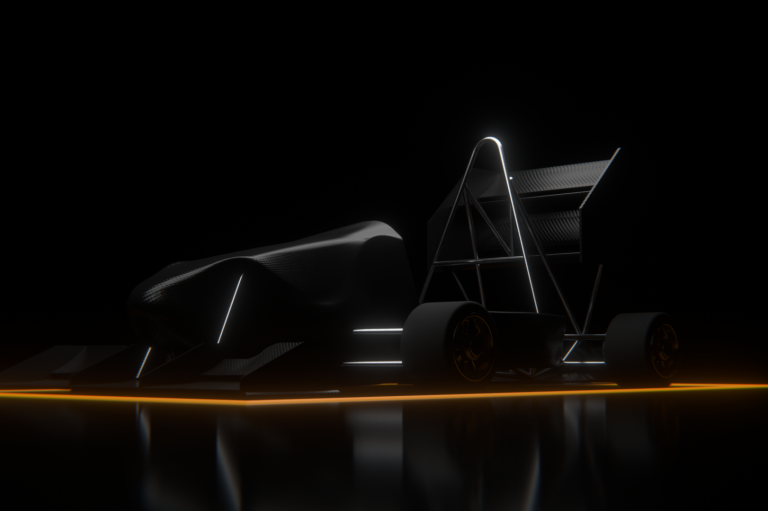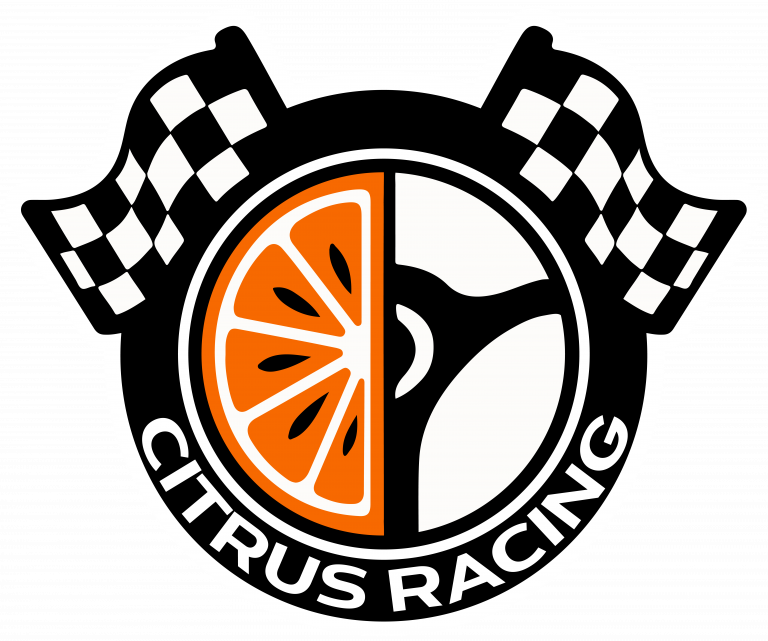
~1950s-1980s
The first SAE competition was held in 1980, so these early competition years were likely with local universities and casual in nature. This is all the information we have of these years, at present.
1980s-2003: SU Racing Club
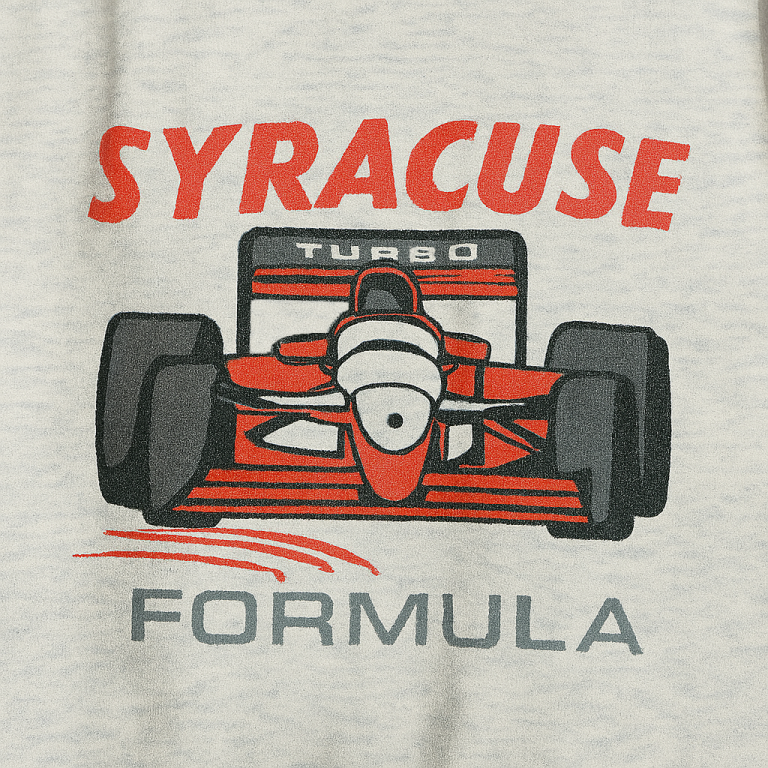
The University discontinued its curriculum integration with the team in 2001. Now an independent club, the students were not prepared for sudden independent leadership. They struggled to make it to the official SAE competition from 2001-2003 and eventually disbanded, but their efforts left a mark in history. A half-completed 2003 car would be recovered and serve as a jump-start for the next team.
2009-2013: SU Formula SAE
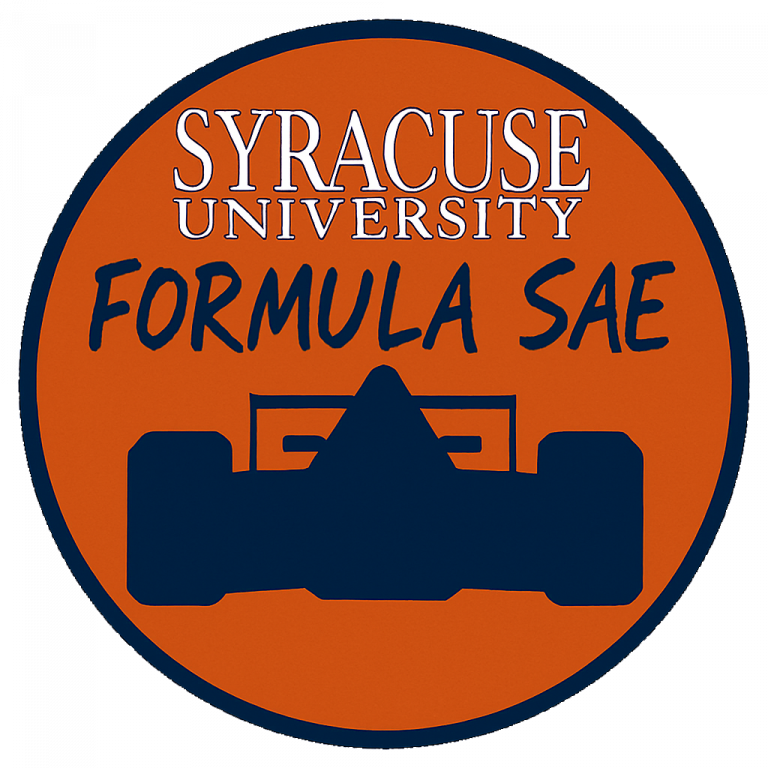
The early 2000s saw the dot-com crash and great recession. SU Racing Club’s 2003 car was left mostly forgotten in the upper basement of Link Hall. The limited knowledge of its existence was passed down through years of mechanical engineers until an effort to jumpstart was made in 2009.
The team initially tried to rework the 2003 car to go to SAE competition, but standards had changed, and they knew they “wouldn’t have a car to spec”. They tried to host a local competition at Skytop lot with neighboring universities, but the effort was halted due to insurance concerns.
They eventually stripped the 2003 car for parts and tried to manufacture their first car, “Arianna” from scratch. The chassis was fabricated in 2013, but the team discovered it was too small for regulation and had to scrap its design before competition.
2013-2020: Citrus Racing [Early Years]

The team went back to the drawing board for CR2. They executed a new design within a year and went to comp in 2016 but experienced a host of failures (fuel, electrical, breaks). They used the next year to iterate on the design with a new paint job, racing CR2.5 in 2017 and successfully completing inspection for the first time in the team’s history since 2000.
CR3’s design started that fall and was again executed in a single year — but this time the effort was successful! They raced as #18 in Formula North 2018. Again, they refined the design and tried to race CR3.5 as #66 in 2019, but it experienced an electrical failure. Regardless, the team made many technical and organizational advancements, in addition to largely expanding its membership size and training programs.
Fall 2019 marked the start of CR4’s design. The team was well underway and making good progress until COVID abruptly halted all efforts in March. The half-completed frame would be a hail-marry gift to the post-covid team that returned to campus in Fall 2021.
2020-Present: Citrus Racing
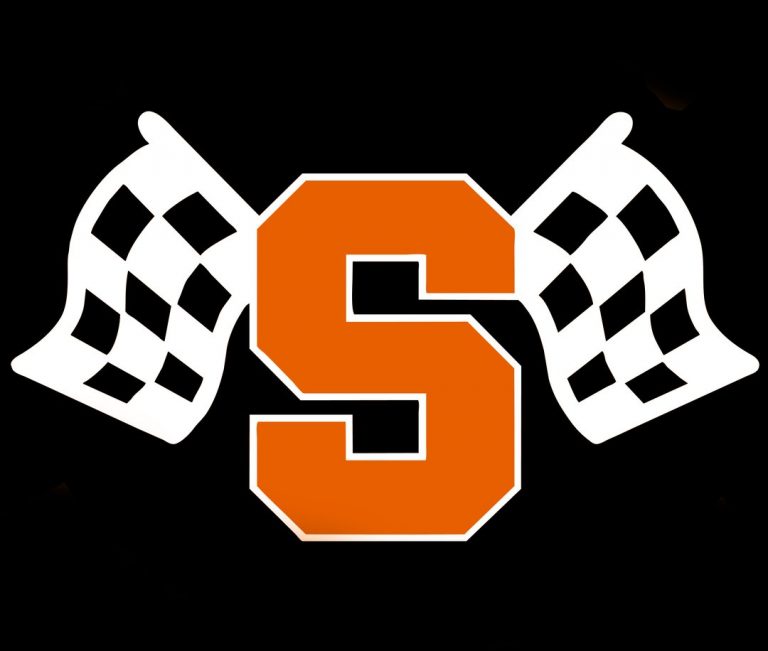
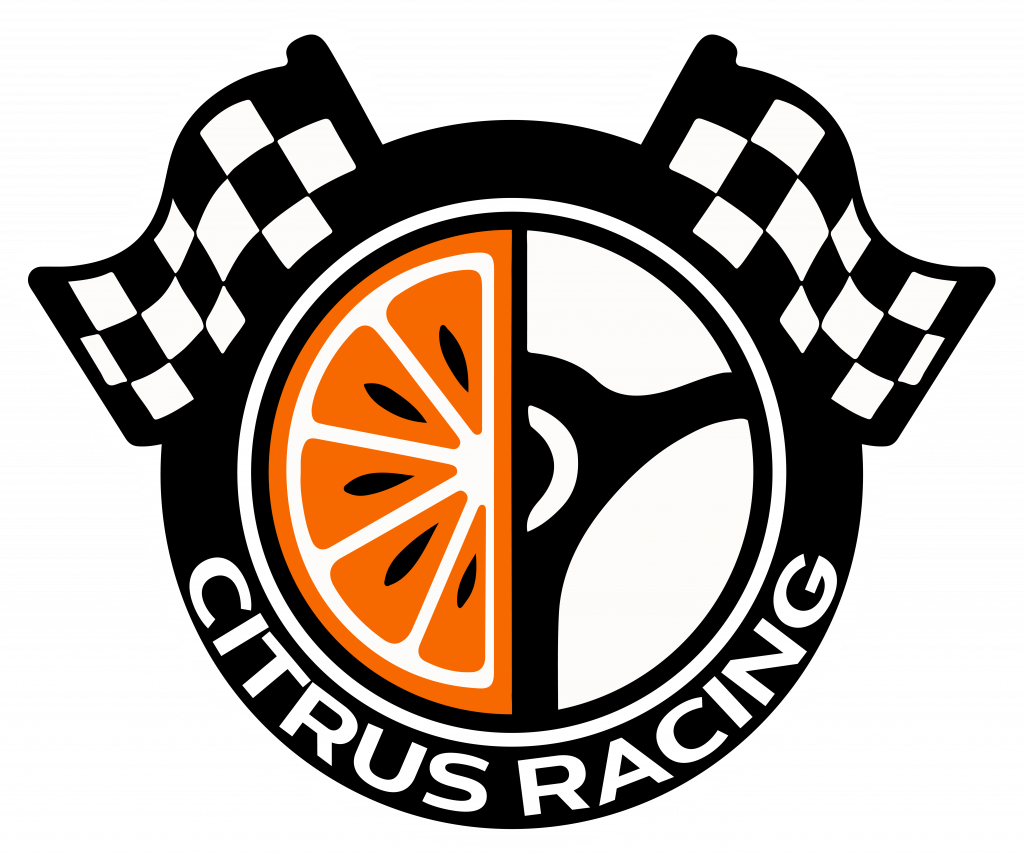
With no dedicated faculty member at the time, a slow blead of technical knowledge occurred through COVID until return to campus in Fall ’21. Those who joined in freshman year suddenly found themselves at the reigns of leadership and scrambled to pass on technical knowledge. Citrus stabilized in ’22 and started its first CR4 trial runs in ’23. The team delayed competition until ’24 to fine-tune the design, where CR4 would go on to score top 37% in Endurance for our first successful competition in 6 years.
Design of CR5 started in Fall ’24 with a 2-year design cycle goal. Heavy emphasis was put on recruiting and training new members to build a steady talent pool. Work continued through the summer with the first successful combustion test running in September of ’25.
